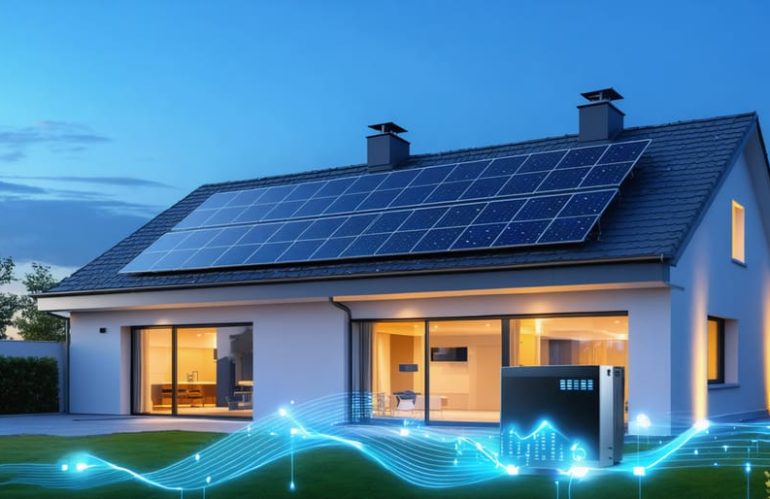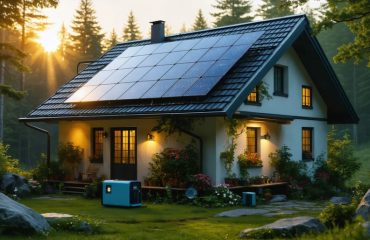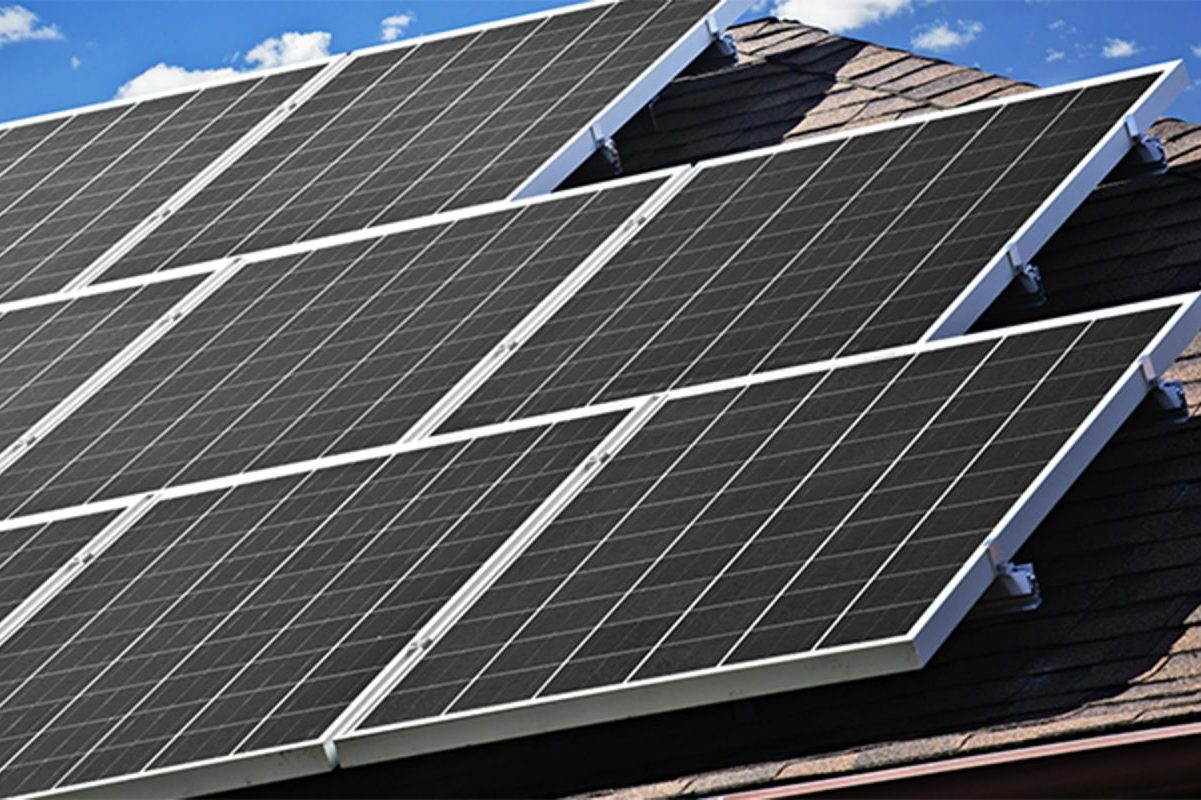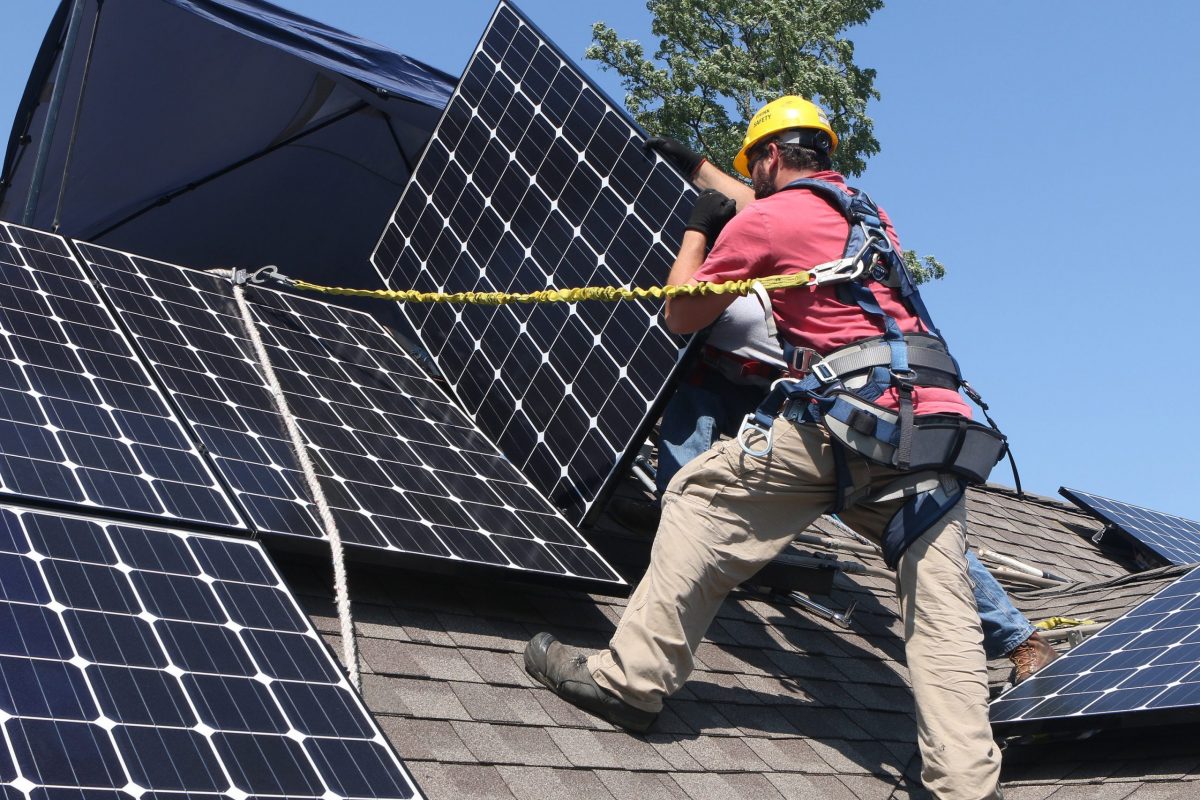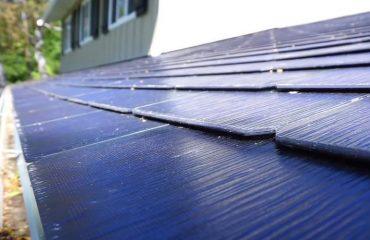Transform your home into an energy-independent powerhouse with a solar battery storage system that ensures 24/7 power availability, even during grid outages. Modern home solar storage solutions combine cutting-edge lithium-ion technology with smart energy management systems, enabling homeowners to capture excess daytime solar production and use it when needed most.
Gone are the days when solar panels stopped working at sunset. Today’s integrated storage systems seamlessly switch between stored and grid power, maintaining consistent energy flow while significantly reducing monthly utility bills. Whether you’re looking to achieve energy independence, protect against power outages, or maximize your solar investment, battery storage represents the missing link in residential clean energy adoption.
As electricity costs continue rising and extreme weather events become more frequent, home solar storage systems offer a practical, future-proof solution for sustainable living. These systems not only provide peace of mind during outages but also help homeowners take full advantage of time-of-use pricing and solar incentives, making them an increasingly attractive investment for environmentally conscious consumers.
How Home Solar Storage Systems Work
Key Components
A home solar energy storage system consists of three essential components working together seamlessly to power your home. The heart of the system is the battery bank, typically using lithium-ion technology, which safely stores excess solar energy for later use. Modern batteries are compact, efficient, and can last 10-15 years with proper care.
The inverter serves as the system’s brain, converting stored DC power from your batteries into AC power that your home appliances can use. Many systems now use hybrid inverters, which can manage both solar panels and battery storage in one unit, simplifying installation and operation.
The control system ties everything together, monitoring your energy production, storage, and consumption in real-time. This smart technology automatically decides when to store power and when to use it, maximizing your energy savings. Many systems come with user-friendly apps that let you track performance and adjust settings from your smartphone.
These components work together to provide reliable backup power during outages and help you maximize self-consumption of your solar energy. The system can automatically switch between power sources, ensuring your home has continuous power without any manual intervention.

Day vs. Night Operation
A home solar energy storage system operates differently during daylight and nighttime hours, working seamlessly to maximize your energy independence. During the day, your solar panels capture sunlight and convert it into electricity. This power first supplies your home’s immediate energy needs, and any excess energy is directed to charge your battery system. When your batteries are fully charged, additional power can be sent back to the grid for credits.
As the sun sets, your system automatically switches to battery power. The stored energy from your batteries powers your home through the evening and night, reducing or eliminating your reliance on grid electricity during peak rate hours. If your batteries run low, your system smoothly transitions to grid power, ensuring uninterrupted electricity supply.
This day-night cycle repeats daily, with your system’s smart controller managing the energy flow to optimize efficiency. During cloudy days or high-usage periods, your system adjusts automatically, drawing power from the most cost-effective source available – whether that’s your panels, batteries, or the grid.
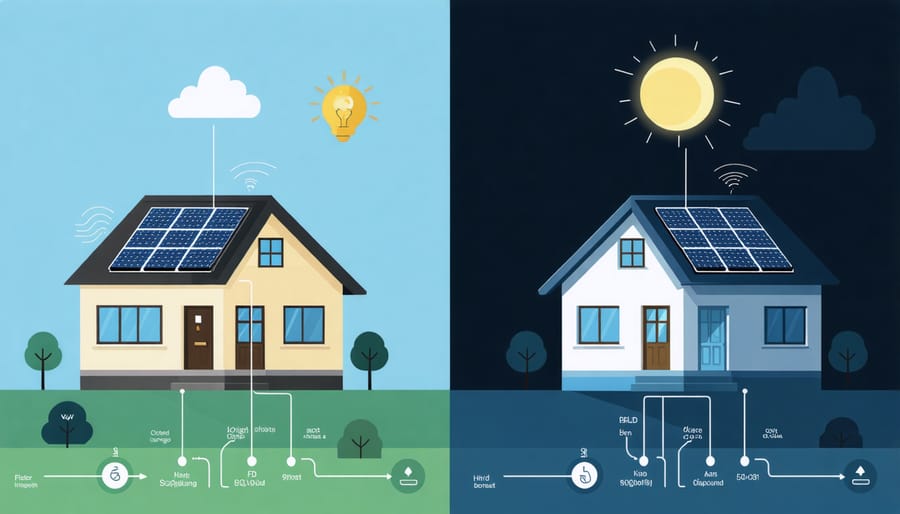
Benefits of Installing Home Solar Storage
Protection from Power Outages
A home solar energy storage system serves as your personal power insurance policy, providing backup power during outages when you need it most. When the grid goes down, your battery system automatically kicks in, keeping essential appliances and systems running without interruption. This seamless transition happens in a fraction of a second, so you might not even notice the power outage.
Unlike traditional gas generators, solar batteries operate silently and don’t require fuel refills. You can power your refrigerator, lights, medical equipment, and other crucial devices for hours or even days, depending on your battery capacity and energy usage. Many homeowners choose to create a dedicated backup circuit that prioritizes essential loads during outages, ensuring longer runtime for what matters most.
Modern storage systems also include smart features that help you prepare for anticipated outages by automatically preserving battery charge when severe weather is forecast. This reliable backup solution provides peace of mind while maintaining your home’s comfort and security during grid disruptions.
Lower Energy Bills
Installing a home solar energy storage system can significantly reduce your energy costs through several smart strategies. During peak sunlight hours, your solar panels generate excess electricity that’s stored in the battery system for later use. Instead of drawing expensive power from the grid during high-demand evening hours, you can tap into this stored energy, effectively avoiding premium rate charges.
Many utility companies charge higher rates during peak usage times, but with a storage system, you can strategically switch to your stored solar power during these periods. This practice, known as peak shaving, can lead to substantial savings on your monthly bills. Additionally, some power companies offer net metering programs, allowing you to earn credits by sending excess stored energy back to the grid.
The financial benefits extend beyond daily savings. During power outages, you avoid costly business interruptions if you work from home, and you don’t need to worry about food spoilage or emergency accommodation costs. Over time, these savings add up to significant financial benefits while increasing your home’s energy independence.
Energy Independence
A home solar energy storage system transforms your relationship with the power grid by giving you unprecedented control over your energy usage. Instead of relying solely on utility companies, you can generate and store your own clean energy, using it whenever you need it – day or night. During power outages, your battery system keeps essential appliances running, ensuring your home stays comfortable and functional. This independence is particularly valuable during extreme weather events or grid disruptions. You’ll also gain protection against rising utility rates and peak pricing periods by using your stored solar energy when grid electricity is most expensive. With a properly sized system, many homeowners can achieve up to 80% self-sufficiency in their daily energy needs, significantly reducing their dependence on external power sources.
Choosing the Right System Size
Calculating Your Energy Needs
To determine the right battery capacity for your home, start by reviewing your monthly electricity bills. Calculate your average daily energy consumption in kilowatt-hours (kWh) by dividing your monthly usage by 30. For most households, this ranges between 20-30 kWh per day.
Next, decide how much backup power you need. Consider whether you want to power your entire home during outages or just essential appliances like refrigerators, lights, and medical equipment. Make a list of these crucial devices and add up their power requirements.
A simple way to estimate your storage needs is to multiply your daily essential power usage by the number of days you want backup power. For example, if your critical loads use 10 kWh per day and you want two days of backup, you’ll need at least a 20 kWh battery system.
Remember to factor in your solar panel production and typical weather patterns. If you live in an area with frequent cloudy days, you might want to increase your storage capacity to ensure reliable backup power.
Future-Proofing Your System
When planning your solar energy storage system, it’s essential to think ahead about your future energy needs. A well-designed system should accommodate potential increases in electricity consumption, whether from adding an electric vehicle, expanding your living space, or incorporating new appliances.
Start by choosing a battery system with modular capabilities, allowing you to add more storage capacity as needed. Many modern systems are designed to be scalable, making future expansions straightforward and cost-effective. Consider leaving space in your installation area for additional batteries and ensuring your inverter can handle increased capacity.
It’s also wise to install electrical conduit and wiring with extra capacity during the initial setup. This forward-thinking approach can save you money and hassle when upgrading later. Some homeowners opt for slightly larger inverters than currently needed, providing headroom for future solar panel additions.
Don’t forget to consider emerging technologies like smart home integration and vehicle-to-grid capabilities. While you may not need these features now, having a system that can accommodate them ensures you’re ready for tomorrow’s energy innovations.
Installation and Maintenance
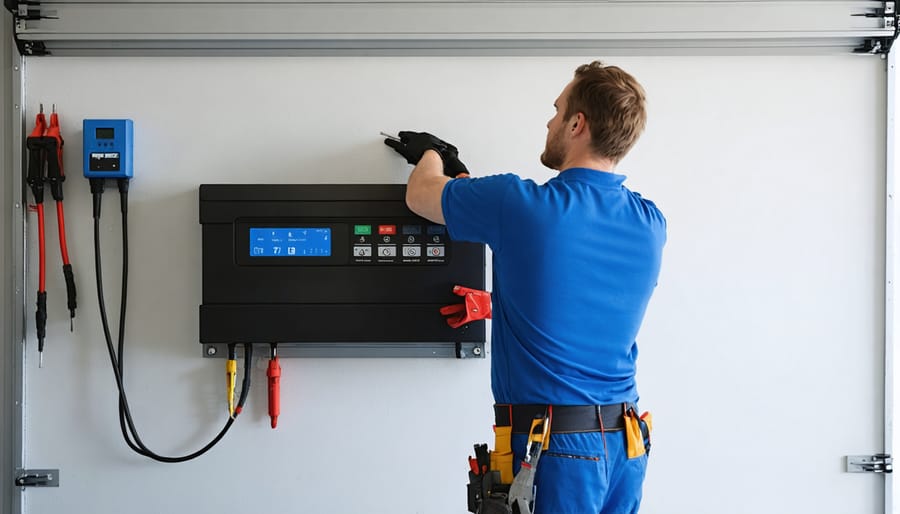
Professional Installation Process
The installation of a home solar energy storage system should always be handled by certified professionals to ensure safety and optimal performance. The process typically begins with a thorough site assessment, where installers evaluate your home’s electrical system, available space, and structural integrity.
Your installation team will first mount the battery unit in a suitable location, usually in your garage or utility room, where it’s protected from the elements and maintains an ideal operating temperature. They’ll then install a dedicated battery disconnect switch and necessary safety equipment.
Next, the installers will connect your battery system to your home’s electrical panel through an inverter, which converts stored DC power to usable AC power. If you’re adding storage to an existing solar setup, they’ll integrate it with your current solar inverter system.
The team will also install a smart energy management system that monitors power flow between your solar panels, battery, and home. This includes setting up WiFi connectivity for remote monitoring and control.
After all connections are made, the installers will perform comprehensive testing to ensure everything works correctly. They’ll verify proper charging and discharging cycles, check all safety systems, and confirm the backup power functionality works as intended.
Finally, your installation team will walk you through the system’s operation, explain monitoring features, and provide documentation for warranty and maintenance requirements. The entire installation process typically takes 1-2 days, depending on system complexity.
Long-term Care and Monitoring
To ensure your solar energy storage system maintains its optimal performance over the years, regular maintenance and monitoring are essential. Modern battery systems come with smart monitoring tools that let you monitor your battery performance through user-friendly mobile apps or web interfaces.
Schedule annual professional inspections to check battery connections, verify system settings, and ensure proper ventilation. Keep the battery area clean and at the recommended temperature range, typically between 50-85°F (10-29°C). Most home battery systems are designed to last 10-15 years, but proper care can extend their lifespan.
Pay attention to your system’s charging cycles and depth of discharge. Many modern batteries automatically manage these factors, but it’s good practice to check your usage patterns and adjust settings if needed. Watch for any unusual changes in performance, such as decreased storage capacity or longer charging times, as these might indicate maintenance needs.
Keep detailed records of system performance, maintenance dates, and any issues encountered. This documentation helps track long-term trends and can be valuable for warranty claims or future upgrades. Many homeowners find it helpful to set calendar reminders for regular maintenance tasks and performance reviews.
Most importantly, work with qualified professionals for any repairs or adjustments to ensure your system continues operating safely and efficiently.
Investing in a home solar energy storage system represents a significant step toward energy independence and sustainable living. As we’ve explored throughout this article, these systems offer numerous benefits, from providing reliable backup power during outages to helping you maximize your solar investment through strategic energy management. By storing excess solar power for later use, you’re not just reducing your carbon footprint – you’re also taking control of your energy costs and protecting your home from grid uncertainties.
The technology has become increasingly accessible, reliable, and cost-effective, making now an excellent time to consider installation. With various financing options available and potential tax incentives, the initial investment can be more manageable than you might think. Plus, the long-term savings on energy bills and increased property value make it a sound financial decision for many homeowners.
Remember, the key to success lies in proper system sizing, professional installation, and regular maintenance. Take time to assess your energy needs, research qualified installers, and understand your local regulations. Whether you’re motivated by environmental concerns, energy independence, or financial savings, a solar storage system can help you achieve your goals.
Don’t wait to start your journey toward energy independence. Contact local solar installers to get personalized assessments and quotes, and join the growing community of homeowners embracing clean, reliable, and sustainable energy solutions.

